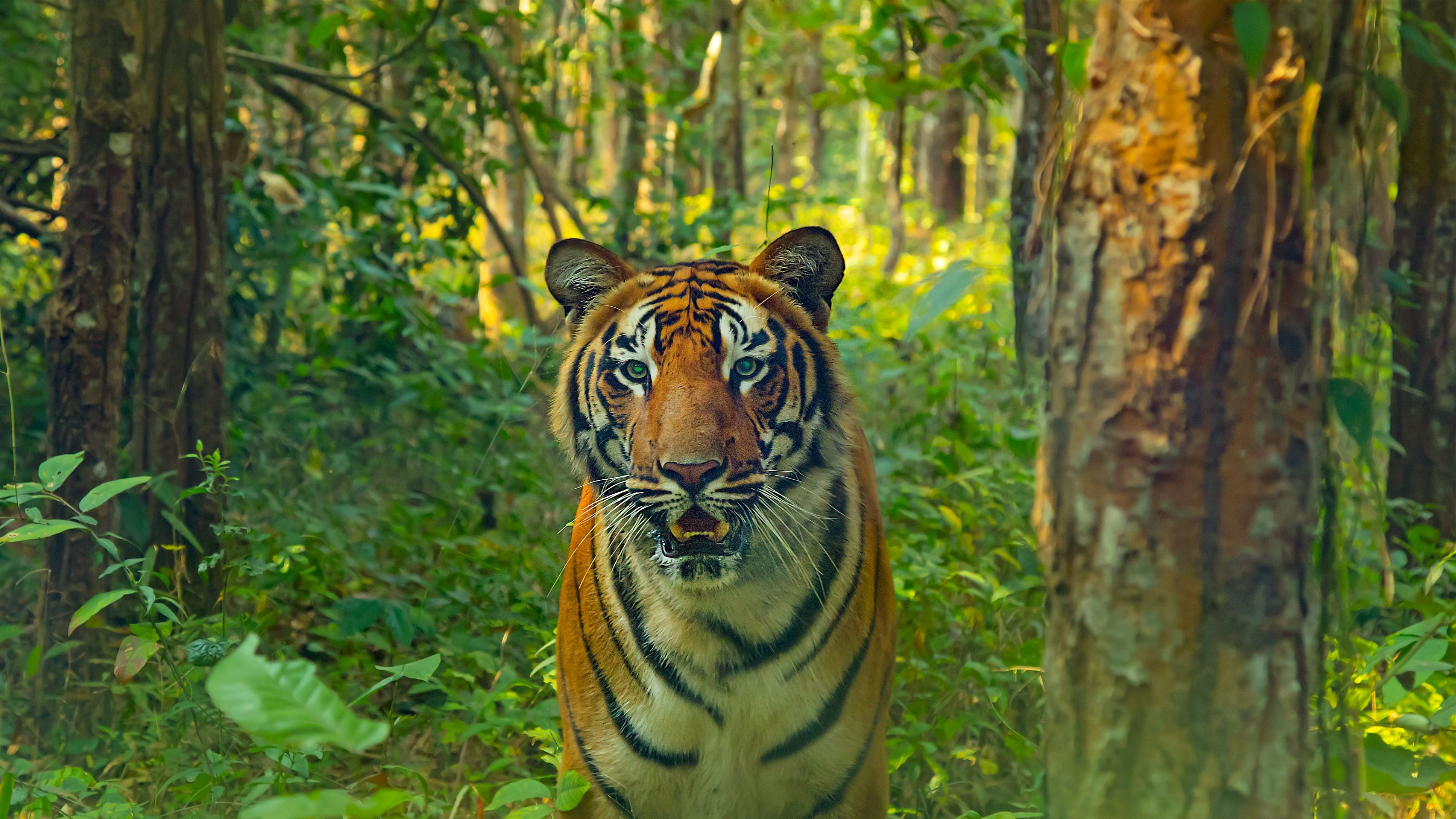
Royal Bengal Tiger
Credit: Special Arrangement
Guwahati: Tigers are literally roaring loudly in Assam's Manas National Park, once a hotbed of militants.
The conservation efforts taken up since the signing of the Bodoland Accord with insurgent groups in 2003 and gradual decline in militancy has resulted in a three-fold increase in the density of Royal Bengal Tiger population in the park, situated along Indo-Bhutan border, between 2011-12 and 2018-19, says a study.
The team of researchers led by Dipankar Lahkar, Senior Manager and researcher of Aaranyak, a biodiversity conservation group in Assam, stated that the tiger population density (adults/100 km2) in the park increased from 1.06 in 2011–12 to 3.64 in 2018–19 and even carry the potential to grow to 8.0 or more.
"The tiger population in the Manas National Park is on an increasing trend and will grow to double its number within 2030 provided conservation measures are in place and effective. The number of tigers in Manas was 44 adults, as photographed in 2021," Aaranyak said in a statement on Friday.
"The findings indicate that collaborative efforts from local communities, government, and conservation agencies can lead to successful species recovery in post-conflict scenarios. The increased funding, improved protection infrastructure, and a larger staff helped the park experience a significant rise in tiger population density," it said.
The research paper was recently published in the Journal of Biological Conservation. Led by Lahkar, the research team comprised M. Firoz Ahmed, head of the Tiger Research and Conservation division of Aaranyak, Ramie H. Begum, associate professor, Assam University (Diphu campus), Sunit Kumar Das of WWF- India, Hiranya Kumar Sarma and Anindya Swargowari, former Park Managers, Manas Tiger Reserve, YV Jhala, former professor and dean at Wildlife Institute of India, Imran Samad, independent researcher and Abishek Harihar, director, tiger program of Panthera.
"The growth was supported by thriving tourism revenue, which bolstered management budgets. However, challenges like poaching and habitat loss persist, emphasizing the need for continuous management focus as tiger populations approach their carrying capacity."
The 2,837 square kilometer Manas Tiger Reserve is part of the 6,500 square kilometer Transboundary Manas Conservation Area. The park used to be a hotbed of insurgent groups such as Bodo Liberation Tigers, National Democratic Front of Bodoland, United Liberation Front of Asom, beside others. Militant activities between 1987 and 2003 adversely impacted the landscape as well as the conservation efforts.
The study said over 40 per cent of the primary forests were converted to agriculture and settlements, the greater one-horned rhinoceros was locally extirpated, and the administrative and protective mechanisms, infrastructure and workforce in Manas National Park, the flagship protected area in the region and a UNESCO World Heritage Site, were significantly impacted leading to declines in wildlife habitats and populations. The militancy acti
But an operation against Indian insurgent groups in Bhutan and signing of the Bodoland Accord in 2003 significantly reduced militancy and led to formation of Bodoland Territorial Council. Another accord was signed in 2020 with all other insurgent groups, further pushing development activities as well as conservation in Manas National Park.